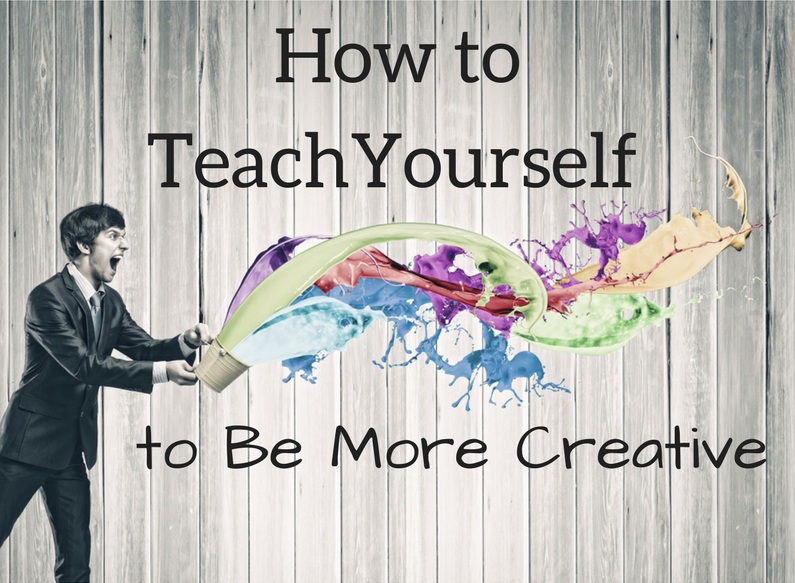I can remember being in elementary school, sitting in art class being asked to draw whatever came to mind. We had free reign, or as much autonomy as a second grader with a broken piece of crayon could have. Those kinds of assignments paralyzed me; what was I supposed to draw? Were we being graded on this? What if I wasn’t good enough?
That last question was the kicker. For me, the idea of creativity brought out my deepest fear- that I wouldn’t be good enough. I am a type A personality through and through, anyone who knows me and reads this will agree, but I was envious of the people who didn’t think twice about doing something creative and stepping outside of their boundaries. I was stuck in the creativity trap; I thought you were either a creative person or you weren’t.
The Right-Brained Assumptions
What I’ve realized now is that creativity isn’t limited to our right-brained friends. Every single one of us is creative, though our creative outlets and end products look very different from one another. To understand creativity, we have to understand what creativity is and what it isn’t. Creativity is a process and is not a flash of inspiration that comes seemingly out of nowhere.
Creativity, whether it relates to the arts, writing, coding, or business, relies on our brain’s ability to combine different mental representations of things we already know into new representations. Human imagination is scientifically rooted in a widespread network throughout our brain to manipulate ideas, images, and symbols.
Research from the California Institute of Technology, better known as CalTech, found that a network of regions in your brain, rather than just one area, determines general intelligence. That means that while you may identify with the left brain or right brain trope, you use all areas of your brain when you make connections and when you work through problems and conceptualize ideas.
The idea that nothing is ever truly novel holds some weight here. The creative process is built out of the connections that you make between things you already know and have learned before. These connections that you establish are what lead you to a new way to think about a problem, to paint a landscape, and to write a new series of code.
Creativity is Connecting Things
Steve Jobs gave an interview with Wired in 1996 and said this on creativity, “Creativity is just connecting things. When you ask creative people how they did something, they feel a little guilty because they didn’t really do it, they just saw something. It seemed obvious to them after awhile. That’s because they were able to connect experiences they’ve had and synthesize new things.” So with this in mind, we can start to find ways to teach ourselves to be more creative.
Your Knowledge Base
Having a wide knowledge base is the best place to start. I’ll use myself as an example, though this can be applied to any number of other situations that you find yourself wishing you could be a little bit more creative in. Outside of my writing, my career is in consulting. I work with major non-profits conducting research to help them tackle the challenges their organization is facing. There are times when I’m presented with a problem that the client wants to solve and I need to find creative ways to offer solutions.
The best way for me to do this is to know the ins and outs of what the problem actually is. If someone needs help with branding or building relationships with corporate partners, I dive into any research I can find about these things. It’s far more difficult to make connections between things you already know if you don’t know that much about what you’re interested in approaching creatively.
Sparking Creative Inspiraton
Use this information to guide your thinking about the task and be on the lookout for ways that other people have thought creatively about the same problem. Seek out sources of inspiration. What is inspiration? It’s stealing things, but with a nicer euphemism. Unless you’re violating intellectual property laws, using other people’s successes as inspiration is a good thing.
Write down what inspires you. Whether you decide to carry a small notebook, have a running list of notes on your phone, or keep an open document on your laptop, write down the things that you find interesting as they happen. Later on, you can return to these things and use them as a source of new fodder for connections.
I keep a small notebook at my work desk where I’ll jot down my thoughts, names of authors and articles to read more thoroughly later, and to make visual mental maps for difficult tasks. I also keep an open document on my laptop with running bullet points and lists that I refer back to whenever I feel stuck.
Inviting other people in to think with you can also be helpful. A fresh set of eyes will make connections that you may have not previously seen, and they’re able to apply their own knowledge database to the situation and share the connections that they make when they approach the same task. Thinking creatively doesn’t have to happen in a vacuum.
Nor does creativity have to come in the form of an elusive flash of sudden understanding. While that certainly does happen, and it’s always welcome when it does, we can’t rely on it as a consistent way to think through our problems. By thinking creatively and teaching ourselves to look for ways to make connections as a source of innovation, we can treat creativity as a skill rather than an innate gift.














Pingback: Why You Don't Need a Tradition College Education to Be Successful - StartUp Mindset